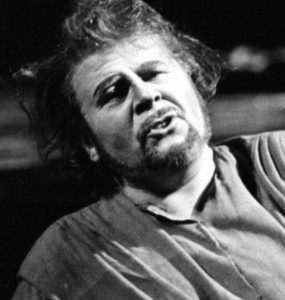Der britische Heldentenor Alberto Remedios starb am 15. Juni 2016 in seinem Wohnsitz in Australien. Er ist weit über Lodon und Großbritanien hinaus bekannt durch seine legendären Goodall-Aufnahmen des Ring des Nibelungen bei Chandos. Geboren am 27. Februar 1935 in Liverpool war er einer der bedeutenden nationalen britischen Sänger im schweren Fach. Er begann seine Karriere nicht als Sänger, sondern als Dockarbeiter und studierte später erst bei Edith Francis, die auch Rita Hunter unterrichtete. Er war ein zuverlässiges Mitglied der Sadler´s Wells Opera in Rollen wie Alfredo, Samson, Bacchus oder Max und wechselte dann zur Folgeorganisation ENO über. In Reginald Goodalls Ring war er Siegfried (und auch Siegmund gelegentlich) neben Norman Bailey und Rita Hunter und kreierte damals eine Sensation im ersten nationalsprachigen Ring. 1973 wurde dieser aufgenommen. Auch als memorabler Stolzing in der wieder englischsprachigen Version der ENO der Meistersinger bleibt er in Erinnerung. Neben der ENO sang Remedios auch an der Met, in Seattle, Frankfurt, San Francisco und Bueonos Aires. 1999 zog er sich nach Australien zurück. Sein bruder Ramon war ebenfalls ein Tenor, und in der erwähnten Meistersingern sangen beide an der ENO. Nachstehend eine Würdigung seines Stammhauses, der English Natioal Opera. G. H.
The performance of Tristan and Isolde on Wednesday 15 June 2016 is dedicated to the memory of the great Wagnerian tenor and long-standing member of the ENO family, Alberto Remedios, who died on 11 June. Alberto Remedios joined the then Sadler’s Wells Opera in the 1956-57 season making his debut as Tinca in Puccini’s Tabarro in 1957. He went on to sing a wide mixture of roles with the Company from Mozart to Kurt Weill but it was the role of Walther von Stolzing in the legendary performances of The Mastersingers of Nuremberg conducted by Reginald Goodall in 1968 that truly established his fame. His golden tone, boundless energy and engaging charm made him ideal for the role, all of which can be heard in the Chandos live recording of the production. The huge success of this production led to the Company’s first complete production of The Ring of the Nibelung which Goodall also conducted and in which Remedios sang both Siegmund and Siegfried. These performances too were recorded. Later he sang Tristan with ENO in two different productions again with Goodall, and then Stolzing with Mark Elder. His final appearances were as the Vision of the Poet in Janacek’s The Adventures of Mr Broucek in 1993.
His appearances elsewhere included Mark in a new production of Tippett’s The Midsummer Marriage with The Royal Opera Covent Garden (also recorded) and in 1980 he became the first British tenor to sing Siegfried in that House since Walter Widdop in 1924. For Welsh National Opera he sang Otello, and for Scottish Opera his roles included Aeneas in The Trojans and Laca in Jenufa. Abroad he was for a time a member of the ensemble in Frankfurt; in the USA he appeared in San Francisco, Seattle and at the Metropolitan Opera in New York. He also sang frequently in Australia where he eventually made his home.
For those who saw him as Stolzing or Siegfried the memory is indelible. He was the rare tenor who could, aided by Goodall’s careful preparation, make the third appearance of Walther’s Prize Song sound utterly fresh and ecstatic, while Wagner would surely have delighted in the youthful vigour and natural innocence of his Siegfried as well as the heart-breaking dawning of self-awareness in his death scene in Twilight of the Gods. He was undoubtedly one of the most important artists in ENO’s history and his significance to the Company in the period of the move to the Coliseum from 1968 cannot be overestimated. He was much loved and will be hugely missed (Foto oben: Alberto Remedios als Tristan an der ENO/ Foto ENO Trailer). Quelle: ENO

